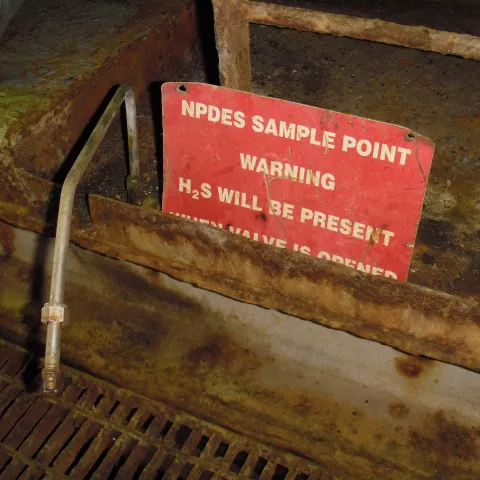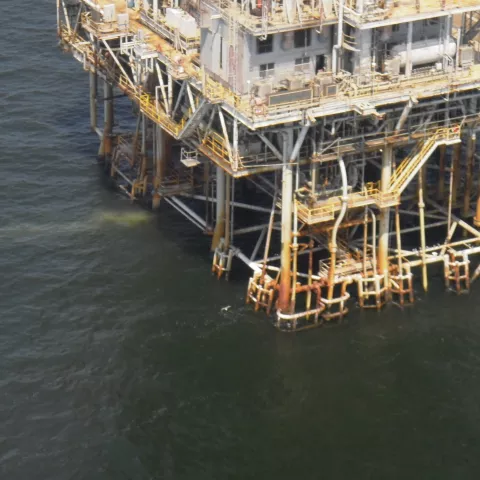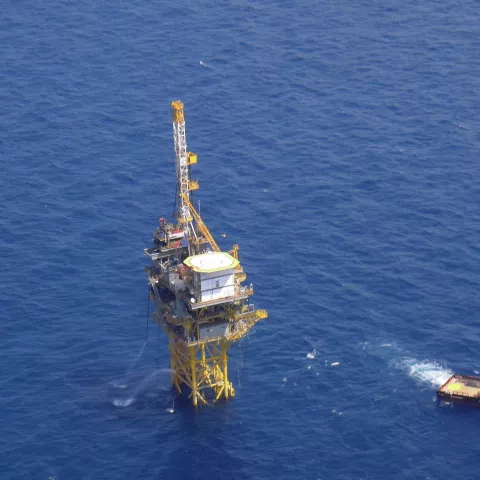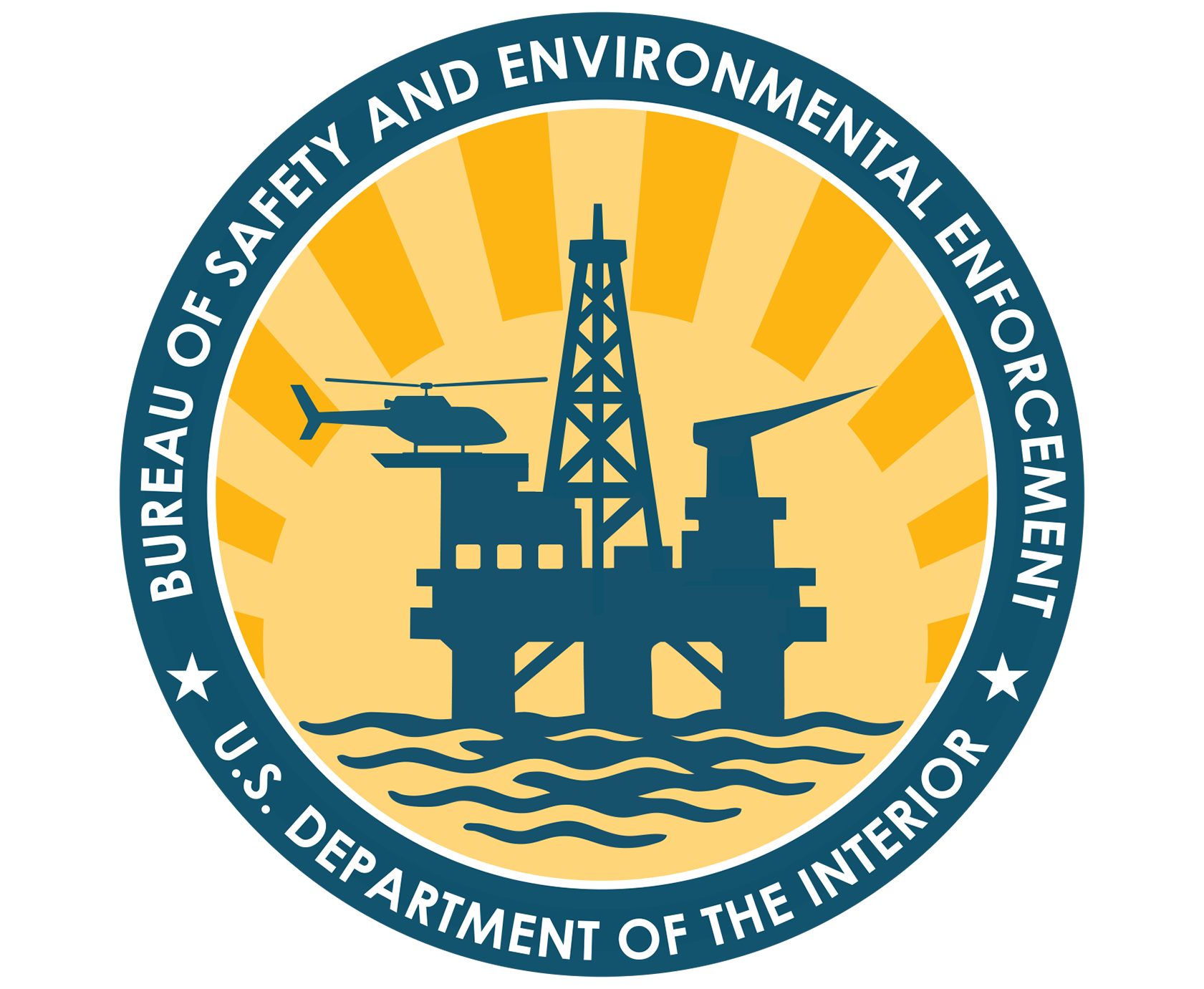BSEE works to promote safety, protect the environment, and conserve resources offshore through vigorous regulatory oversight and enforcement. To accomplish this complex mission, BSEE employees a broad spectrum of world-class professional. These Frequently Asked Questions (FAQs) provide a sample of the questions and answers which BSEE experts deal with. For specific questions of interest, email addresses are listed.
| General | Environmental | Decommissioning | SEMS |
For general questions, please contact bseewebteam@bsee.gov.
Expand All
Archaeology env-compliance-arc@bsee.gov
1. What is an archaeological resource?
Archaeological resource means any material remains of human life or activities that are at least 50 years of age and that are of archaeological interest. Archaeological interest means capable of providing scientific or humanistic understanding of past human behavior, cultural adaptation, and related topics through the application of scientific or scholarly techniques, such as controlled observation, collection, analysis, interpretation, and explanation.
2. Are all archaeological resources protected?
Federal law requires that agencies consider the effects of an undertaking on significant archaeological resources. Significant archaeological resources are those archaeological resources that meet the criteria of Suwanee.gif (12410 bytes)significance for eligibility to the National Register of Historic Places as defined in 36 CFR 60.4.
3. What are the remote-sensing survey intervals?
Blocks determined to have a high probability for containing an historic shipwreck require survey at a 50-meter line spacing. Blocks with a high probability for prehistoric sites require survey at a 300-meter line spacing. Some blocks where our research tells us shipwrecks may exist are too deep for magnetometer survey. In these blocks, a standard 300-meter survey is required using a side-scan sonar.
4. How do I find out what the remote-sensing survey requirement is for my lease block?
That information is now available on the MMS archaeology web page, Archaeology Survey Blocks. Click on the lease area, then search for your block.
5. Can the MMS archaeologists send us a copy of a shallow hazard/archaeology report done by a previous lessee?
Generally, these reports are considered proprietary information owned by the previous lessee. Once a lease has expired or the block has been relinquished, the MMS archaeologists purge copies of the old reports from their files. We suggest that you contact the previous lessee and ask them for a copy of the report.
6. Can we submit an archaeological report for the lease block that was prepared for a previous lessee under a different OCS number?
Yes; however, these previously prepared reports must be reviewed on a case-by-case basis to determine if the block report is in compliance with GOMR's NTL 2005-G07 and MMS's 30 CFR 250, 256, 260, and 281. We suggest that these previously submitted archaeological surveys be resubmitted well in advance of any plans for exploration or development for the block. Surveys conducted before February 17, 1992, were probably surveyed at a 150-meter line spacing interval. If your block is in a prehistoric high probability area, chances are that the report may only need an updated review of the old data. If, however, the block falls in an area that now requires a 50-meter line spacing, you'll probably have to conduct a new survey. In most cases, MMS does not accept in-filling of lines over a previously shot 150-meter grid.
7. We operate a lease that dates back before any archaeological surveys were required and have never conducted any surveys on the lease. If we continue to develop our lease now, do we have to survey it? What if it's been extensively developed?
Blocks that were leased prior to December 1973 and have OSC-G numbers lower than 2440 did not have either an archaeological lease stipulation or NTL requiring a specific survey line spacing interval. All blocks leased before December 1973 were said to be “grandfathered,” meaning they were never required to have an archaeological survey and analysis performed on them. On October 21, 1994, the MMS published the final archaeological rule 30 CFR 250, 256, 280, and 281in the Federal Register. This final rule provided a regulatory mechanism and authority to implement the GOMR's NTL 91-02 (now NTL 2005-G07) and revoked the former practice of “grandfathering previously unsurveyed leases that fall within high-probability areas for archaeological resources.” GOMR requires that lessees for these formerly “grandfathered” leases submit an “as-built” plat of the subject lease block that will include all existing facilities and pipelines and the location of the proposed plan of exploration or development. The MMS will review these proposed plans, on a case-by-case basis, to determine if previous seafloor disturbance obviates the need for an archaeological survey.
Water Quality waterqualitycompliance@bsee.gov
8. Who is responsible for the regulation of water pollution resulting from the oil and gas industry in federal waters?
Clean Water Act and Regulations
Growing public awareness and concern for controlling water pollution led to enactment of the Federal Water Pollution Control Act Amendments of 1972 (33 U.S.C. 1251 et seq.). As amended in 1977 (P.L. 95-217), this law became commonly known as the Clean Water Act (CWA). The CWA is the principle law governing pollution control and water quality of the Nation's waterways and is primarily overseen by the U.S. Coast Guard (USCG) and the Environmental Protection Agency (EPA). The CWA establishes conditions and permitting for discharges of pollutants into the waters of the United States under the National Pollution Discharge Elimination System (NPDES) and gave the Environmental Protection Agency (EPA) the authority to implement pollution control programs such as setting wastewater standards for industry and set water quality standards for all contaminants in surface waters. Regulations governing the NPDES program are contained in 40 CFR Part 122.

Through a 1984 Memorandum of Understanding (MOU) between the Department of the Interior (DOI) and EPA and a 2012 MOU between the USCG and BSEE and all associated Memorandums of Agreement (MOAs), the three agencies cooperate and coordinate regarding the oversight of pollution prevention for oil and gas activities on the Outer Continental Shelf (OCS).
Outer Continental Shelf Lands Act Regulations
Those submerged lands under U.S. jurisdiction seaward of state coastal waters are considered the Outer Continental Shelf and fall under Federal jurisdiction. The Outer Continental Shelf Lands Act of 1953 (OSCLA), and subsequent amendments in later years, outlines the federal responsibility over the OCS. Regulations which BSEE uses to carry out the` water quality related responsibilities under the OCSLA are contained in various areas throughout federal regulations. The specific pollution prevention regulations are located in 30 CFR Part 250.300 (Subchapter C) – Pollution Prevention and Control. The USCG also has federal responsibilities under OCSLA. The MOUs and MOAs between BSEE and the USCG are in place to delineate and facilitate coordination of the activities of the USCG and BSEE in environmental protection.
9. What kinds of water pollutants are 'permitted' under EPA authority?
Regulations cover all pollution that occurs as a result of the operations conducted by, or on behalf of, a lessee that damages or threatens to damage life, property, mineral deposits, or the marine, coastal , and/or human environments. Water pollutants include produced oil, sand, drilling fluids and cuttings, manufactured or processed hydrocarbons, chemicals, and waste water. Rain water, fresh water, or sea water mixed with any of these constituents is considered a pollutant. Some cooling water intake structures are also regulated under NPDES permits to minimize environmental damage. The most current NPDES Permit for the Offshore Oil and Gas Program are:
- EPA Region 4 NPDES General Permit
- EPA Region 6 NPDES General Permit
- EPA Region 6 NPDES General Permit – Coastal Waters of Texas
- EPA Region 6 NPDES General Permit Modification – Coastal Waters of Texas
- EPA Region 9 NPDES General Permit
- EPA Region 10 NPDES General Permit – Beaufort Sea
- EPA Region 10 NPDES General Permit – Chukchi Sea
10. How are pollutant releases or discharges discovered and reported?

Generally, non-planned releases or discharges on the OCS are reported to the National Response Center (NRC). Reporting should be done by the responsible party or may also be reported by anyone who notices evidence of a release or discharge, such as a sheen. In fact, all lessees and operators are required to report any evidence of a sheen or unauthorized release or discharge. Many unauthorized releases or discharges are simultaneously reported to EPA. Releases which are planned and are authorized under an NPDES permit are monitored for compliance with the regulations and the permit and reported to EPA regularly. BSEE inspections of offshore facilities sometimes reveal releases or discharges or potentials for release or discharge. In these cases, immediate correction and, when appropriate, enforcement action is initiated and follow-up inspection or reporting to BSEE and/or EPA may be required.
11. What happens after an unauthorized pollutant release or discharge is discovered?

Immediate cessation/control of the release or discharge and immediate corrective action is required, which may entail anything from a single process or unit of operation to a total shut-in of a facility. Only after the problem which caused the release or discharge is corrected may operations resume. The lessee must control and remove the pollutant at their own expense, or if necessary it may be done for them at their expense. The lessee retains any responsibility for the release or discharge. Administrative, civil, or criminal action may be initiated by the EPA, BSEE, USCG, or other appropriate agency depending on the circumstances of the release or discharge. If the source of pollution is unknown, further action may be required, depending on the severity.
